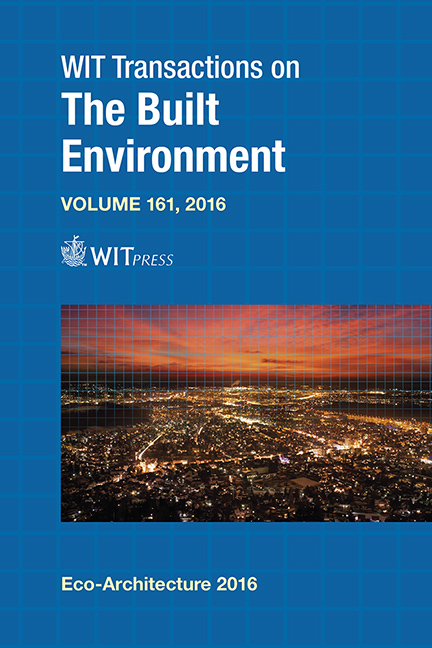Life Cycle Assessment Of Hempstone For Green Buildings
Price
Free (open access)
Transaction
Volume
161
Pages
9
Page Range
205 - 213
Published
2016
Paper DOI
10.2495/ARC160181
Copyright
WIT Press
Author(s)
R. Mungkung, S. Intrachooto, N. Srisuwanpip, A. Lamai, K. Sorakon, K. Kittipakornkarn
Abstract
Hemp is a non-psychoactive (less than 1% tetrahydrocannabinol) variety of Cannabis sativa L. It is cultivated on hills and used mainly for textiles. Hemp requires less water and pesticides. It grows fast (4–5 meters in 3–4 months) and has a high carbon sequestration rate of 1.36 kgCO2e per kg of hemp fiber. This study aims at exploring the potential use of hemp for construction materials. By applying the upcycling design concept, hemp stalks left after fibre harvesting were sun dried before grinding into small pieces of varying sizes. In addition, artificial stones (polyester-resin solid surface material) left over from production processes was also collected. Hemp materials and artificial stone scraps were used at different proportions to develop a new composite called Hempstone. The study found that Hempstone did not require the drying process; hemp fibers helped absorb the moisture. Hemp fibers also offered unique natural aesthetic. Quality tests were conducted to ensure that Hempstone was fit for use in construction. LCA (Life Cycle Assessment) was performed to identify the potential reduction of environmental impacts of typical artificial stone and Hempstone. The results indicated that the Hempstone sheet (0.82×3.04×0.012m) with 10% of hemp-stalks (5 mm size) and 7.5% or 10% by weight of artificial stone scraps performed best with the potential reduction of environmental impacts by 40% on climate change, 42% on freshwater eutrophication, 55% on terrestrial ecotoxicity and 60% on terrestrial ecotoxicity. Hence, the Hempstone sheet with 10% of hemp-stalk material and 10% of artificial stone scraps complies with the UPCYCLE Carbon Footprint certification and labelling requirement of minimum scrap content of 20% by weight. With the growing pursuit of green buildings, these reductions show that the use of hemp in construction materials help reduce impact on the environment and offer opportunities for commercialization.
Keywords
carbon footprint, eco material, green building, hemp, Hempstone, Life Cycle Assessment, upcycling, sustainability





